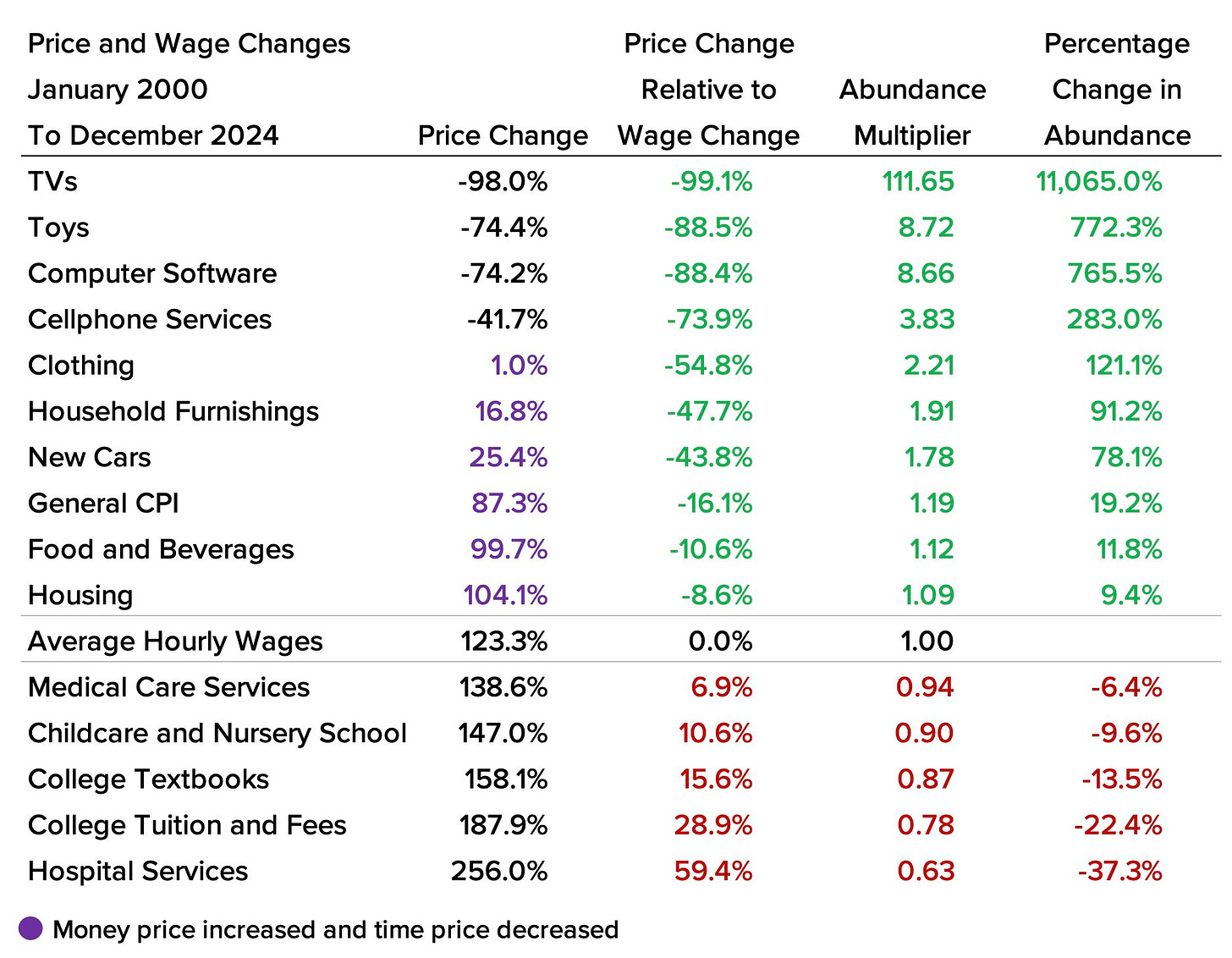Time Pricing and Mark Perry’s Latest “Chart of the Century”
Always compare prices to hourly wages to understand the true change in living standards.
Professor Mark Perry recently posted his updated “Chart of the Century,” featuring price and wage data from the Bureau of Labor Statistics (BLS). The chart tracks 14 items over the 24 years from January 2000 to December 2024 and includes both the overall inflation rate and changes in average hourly wages.
To examine the data from a different perspective, we calculated the change in time prices of these 14 items relative to the change in the average hourly wage. We then determined the abundance multiplier—a value that indicates how many units of an item you could buy in 2024 for the amount of work time it took to buy one unit in 2000. If there were no change, the abundance multiplier would equal one. A value below one indicates decreasing abundance, while a value above one reflects increasing abundance. We also calculated the percentage change in abundance for each item.
This analysis illustrates that things can become more expensive in dollar terms while simultaneously becoming more affordable in time prices. For instance, while the general Consumer Price Index (CPI) rose by 87.3 percent, average hourly wages increased by 123.3 percent. As a result, time prices fell by 16.1 percent. For the time it took to purchase one CPI basket in January 2000, a consumer could buy 1.192 baskets in December 2024—an abundance increase of 19.2 percent.
Notably, categories such as housing, food and beverages, new cars, household furnishings, and clothing all increased in money prices. However, after adjusting for rising wages, they became more affordable in time-price terms. Although 10 of the 14 items rose in nominal prices over the 24 years, only five had a higher time price when accounting for the 123.3 percent increase in hourly wages.
We also created a chart showing the percentage change in abundance for the general CPI and each of the 14 tracked items:






Powerful information
Notice the things that got more expensive are the things the government pays for or subsidizes. Let's hope they don't create a "Department of TV and Electronics!